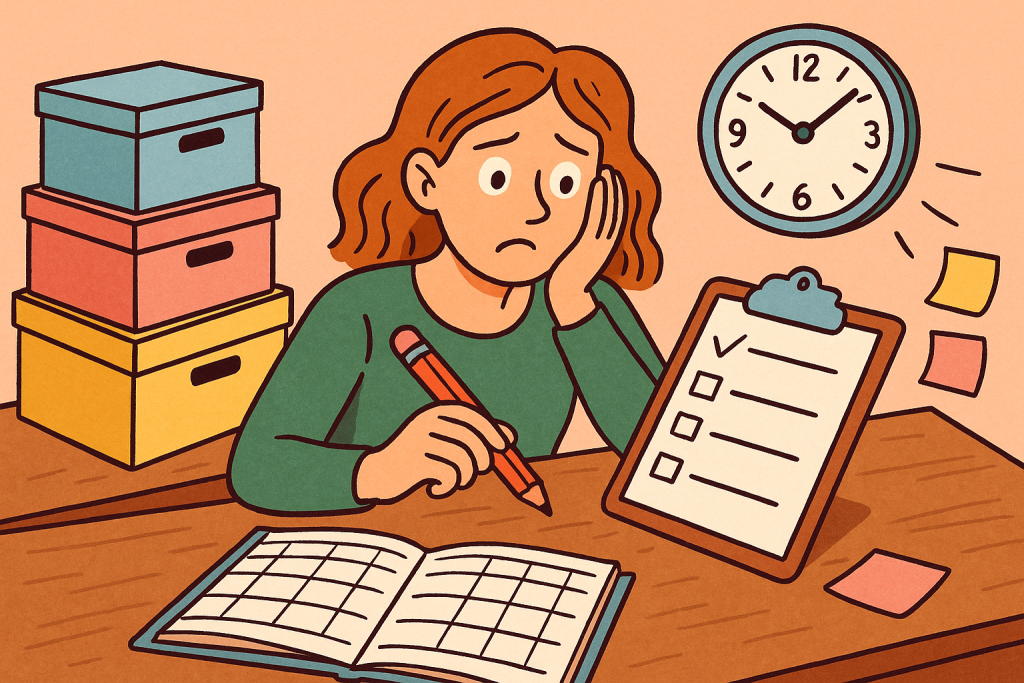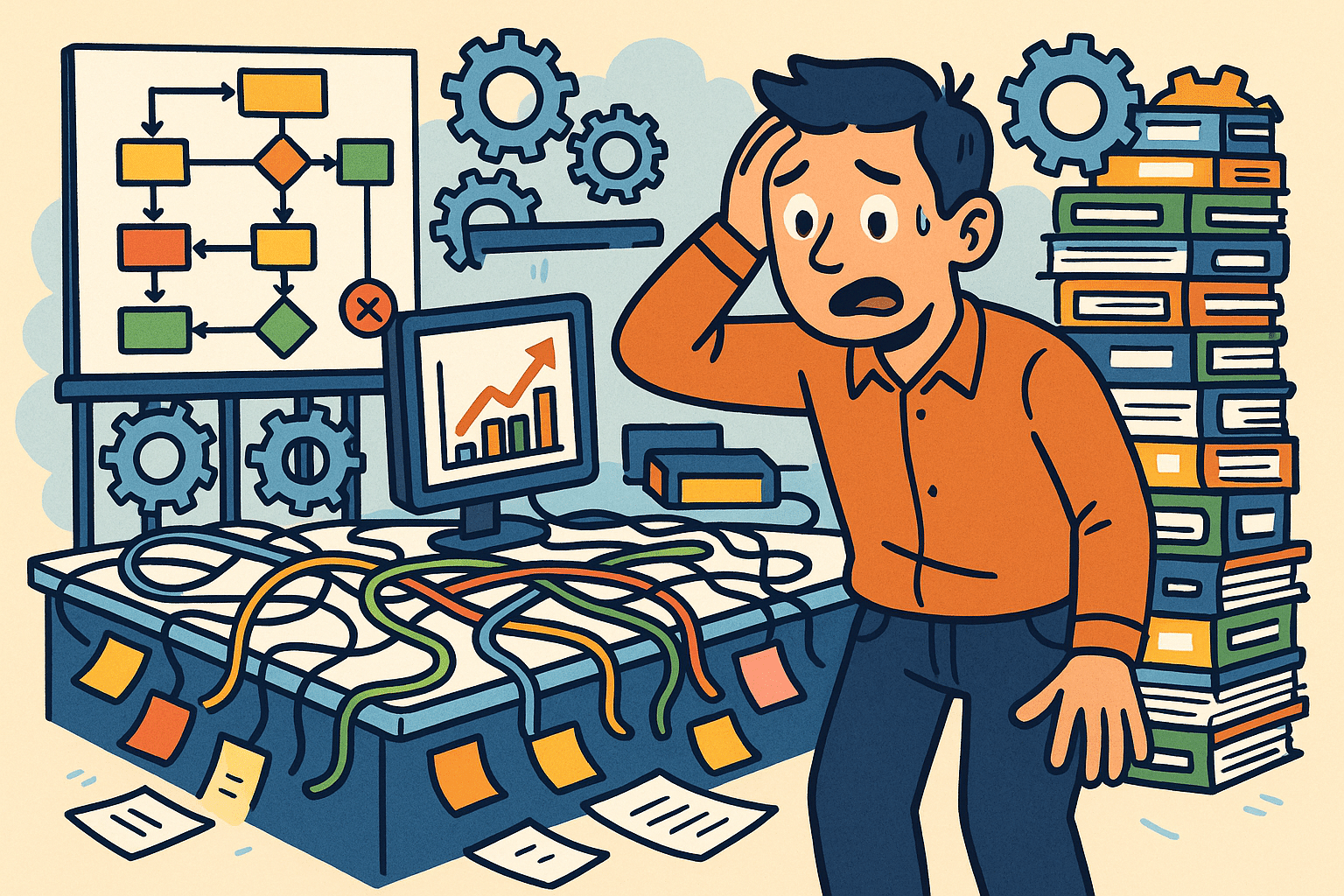Understanding why organizing isn’t the same as prioritizing changes how you manage your day. This article reveals the subtle but crucial differences—and shows how to master both for maximum impact.

Why Organizing Isn’t the Same as Prioritizing
In today’s information-heavy world, being organized is no longer enough. As productivity experts increasingly point out, it’s the ability to prioritize that determines success. While organizing means structuring your tasks, prioritizing decides which ones deserve your attention first.
The Definitions – Clear but Distinct
- Organizing refers to sorting, categorizing, and structuring items—whether physical or digital. Think of inbox folders, project boards, or document labeling.
- Prioritizing, on the other hand, involves ranking tasks by importance and urgency and choosing what to focus on to achieve goals efficiently.
These may overlap in application, but conflating them can be costly.
Trend Spotlight – Beyond to‑Do Lists
Recent productivity discussions—like those in Vox and New Yorker—stress that:
- Old-school hacks often fail.
- Just having a list isn’t enough. You must prioritize intelligently.
These sources highlight that while organizing provides clarity, prioritizing drives impact.
Why It Matters in Practice
- Deeper Focus & Quality Work
Tools like calendars and Eisenhower matrices let you discard non-critical tasks and invest your energy in what truly matters. That’s why methodologies like Cal Newport’s “deep work” rely heavily on prioritization. - Reduced Stress
Research shows people with structured prioritization report 20% lower stress levels. - Better Decision Making
Prioritizing helps avoid decision fatigue—studies suggest you’re up to 15% more effective when tasks are clearly ranked.
Step‑by‑Step Guide: From Organized to Prioritized
1. Do a Brain Dump
Clear your mind and write everything down. This first step is organizing in action.
2. Categorize & Organize
Use folders, boards, and labels for clear structure.
3. Then Prioritize
- Use an Eisenhower Matrix: urgent/important vs. unimportant/not urgent.
- Or try the 1–3–5 Rule for daily bite-sized organization: 1 big, 3 medium, 5 small tasks.
4. Time‑Block Your Day
Allocate focused time slots for top priorities. According to expert Sahar Yousef, list the “3 most important tasks” daily—then fill time slots accordingly.
5. Protect & Adapt
Allow flexibility during focus blocks. Smart prioritization tools help you adapt without losing flow.
6. Review & Revise Weekly
A weekly review keeps your system both organized and prioritized—critical for long-term clarity hbr.org.
Real‑World Example
Case: A marketing manager:
- Organizes tasks by campaign, analytics, and content.
- Prioritizes using the 1–3–5 Rule.
- Uses weekly reviews to adjust priorities as deadlines shift.
Outcome: fewer missed deadlines, less stress, and better creativity.
Common Missteps (and How to Avoid Them)
- Everything Organized, Nothing Done
A tidy system isn’t enough if you fail to decide what matters most first. - Rigid Structure, No Flexibility
Over‑organizing can paralyze action. Your to‑do list doesn’t have to be perfect—prioritize adaptability. - Too Many Tools, Too Much Time
If the system takes more time than the work itself, it’s counterproductive. Simplicity wins.
Key Trends to Watch
- Minimalist Productivity: Savvy professionals ditch complex planners for simple frameworks like sticky notes or digital widgets.
- Tech-Human Blend: AI tools now organize tasks for you—but prioritization still needs human judgement.
- Wellness-Focused Productivity: Prioritizing self-care tasks is becoming standard, not optional.
Organizing vs. Prioritizing – Summary Table
| Organizing | Prioritizing |
|---|---|
| Sorts, labels, and bucketizes items | Selects which items deserve your attention first |
| Reduces clutter | Maximizes results with minimal tasks |
| Focuses on structure | Focuses on impact |
| Helps you see what needs doing | Helps you act on what matters most |
| Passive readiness | Active decision-making |
Final Takeaway
Organizing sets the stage. Prioritizing picks the starring roles. To truly elevate productivity, align your system with focused decision-making. Use simple tools, schedule priority blocks, and keep weekly reviews top of mind. That’s not advice—it’s what the latest research and modern productivity trends confirm.
When you understand why organizing isn’t the same as prioritizing, you stop spinning your wheels. You begin taking real, measurable action toward your most important goals.
References
Whatcom Community College, “Organization, Prioritization, Time Management, Decision Making and Problem Solving” (2023).
https://textbooks.whatcom.edu/healthprofessionalism/chapter/essential-tools-organization-prioritization-time-management-decision-making-and-problem-solving/
KimBoo York, “Prioritizing vs. Organizing” (2023).
https://scriptorium.kimbooyork.net/p/prioritizing-vs-organizing
Teamwork.com, “7 Steps for Prioritizing Your Workload” (December 5, 2023).
https://www.teamwork.com/blog/how-to-prioritize-tasks/






